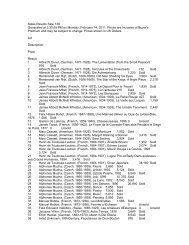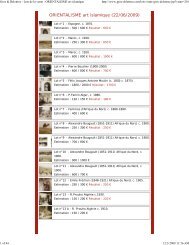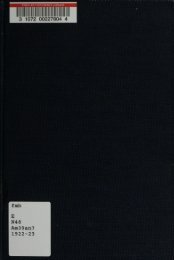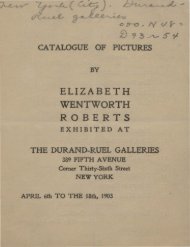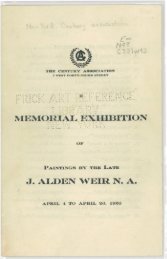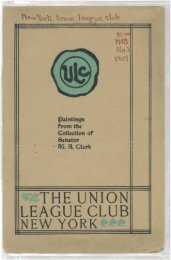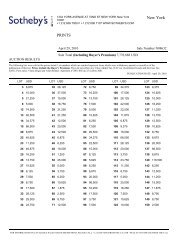Shepherds of the black-headed people - New York Art Resources ...
Shepherds of the black-headed people - New York Art Resources ...
Shepherds of the black-headed people - New York Art Resources ...
- No tags were found...
You also want an ePaper? Increase the reach of your titles
YUMPU automatically turns print PDFs into web optimized ePapers that Google loves.
sanctuary and saŋŋa a priest. Charvát also envisaged an importantrole <strong>of</strong> <strong>the</strong> "assembly", in view <strong>of</strong> <strong>the</strong> occurrence <strong>of</strong> <strong>the</strong> GAL.UKKINtitle. As against this, in his later treatise he ascribed a universal,that is, ei<strong>the</strong>r sacred or pr<strong>of</strong>ane, role to <strong>the</strong> AB <strong>of</strong> Ur. Here I wish topoint out that <strong>the</strong> purely religious role <strong>of</strong> <strong>the</strong> AB is attested to in <strong>the</strong>sources only later.Up to now, that last specialist to have commented on <strong>the</strong> archaic Urtexts has been Giuseppe Visicato. 36 He gives account <strong>of</strong> some 140texts constituting an archive <strong>of</strong> <strong>the</strong> Nanna temple at Ur and notesthat <strong>the</strong> PA.SI urí ki , as well as <strong>the</strong> é-gal, attest to <strong>the</strong> presence <strong>of</strong>palace administration.Let me now take up <strong>the</strong> evidence, and see how far may we go in <strong>the</strong>interpretation <strong>of</strong> <strong>the</strong> key terms.First and foremost, we will have to decide whe<strong>the</strong>r <strong>the</strong> AB is atemple or a palace. The AB is commonly equated with èš,"sanctuary" or "temenos". Most famous <strong>of</strong> <strong>the</strong>se is, <strong>of</strong> course, Enlil'sèš <strong>of</strong> Nippur. What was <strong>the</strong> situation at archaic Ur? The occurrence<strong>of</strong> <strong>the</strong> sanga title seemingly confirms <strong>the</strong> religious character <strong>of</strong> <strong>the</strong>institution, but sanga is also known as a pr<strong>of</strong>ane manager oradministrator <strong>of</strong> <strong>the</strong> é-gal in Lagaš. AB can also be translated as agreat complex, or precinct (Bezirk). The lexeme turns up in manycity names and may well have signified something like "place", in aquite general sense; note that in UD.GAL.NUN orthography AB/UNUGcorresponds to ki "place".The second sign, ŠID, is usually read sanga (saŋŋa) and interpretedas a "priest" or "administrator", "manager" and <strong>the</strong> like. The signmay also be read as umbisag with a meaning "scribe", "author", "<strong>the</strong>responsible one". In addition to this comes also <strong>the</strong> reading <strong>of</strong> thissign as šed = "calculate", "count".Now we may try to discern whe<strong>the</strong>r SANGA EŠ 3 is really a "priest <strong>of</strong><strong>the</strong> sanctuary". Unfortunately, as late as <strong>the</strong> Fara times both signsdisplay a high degree <strong>of</strong> fluidity and polyvalence. Let us see how <strong>the</strong>situation looks like in some particular documents from Ur. Text UETII: 162 has a subscript lugal ŠID še while UET II: 182 has ŠE ŠIDAB. Both subscripts can easily be brought back to a common modelformula <strong>of</strong> še lugal ŠID ("accounts <strong>of</strong> grain <strong>of</strong> <strong>the</strong> king settled") andše AB ŠID ("accounts <strong>of</strong> grain <strong>of</strong> <strong>the</strong> precinct settled"). Text 162 alsocontains a clause <strong>of</strong> še lugal sanga, "grain <strong>of</strong> king andadministrator".36 Visicato 2000.33



